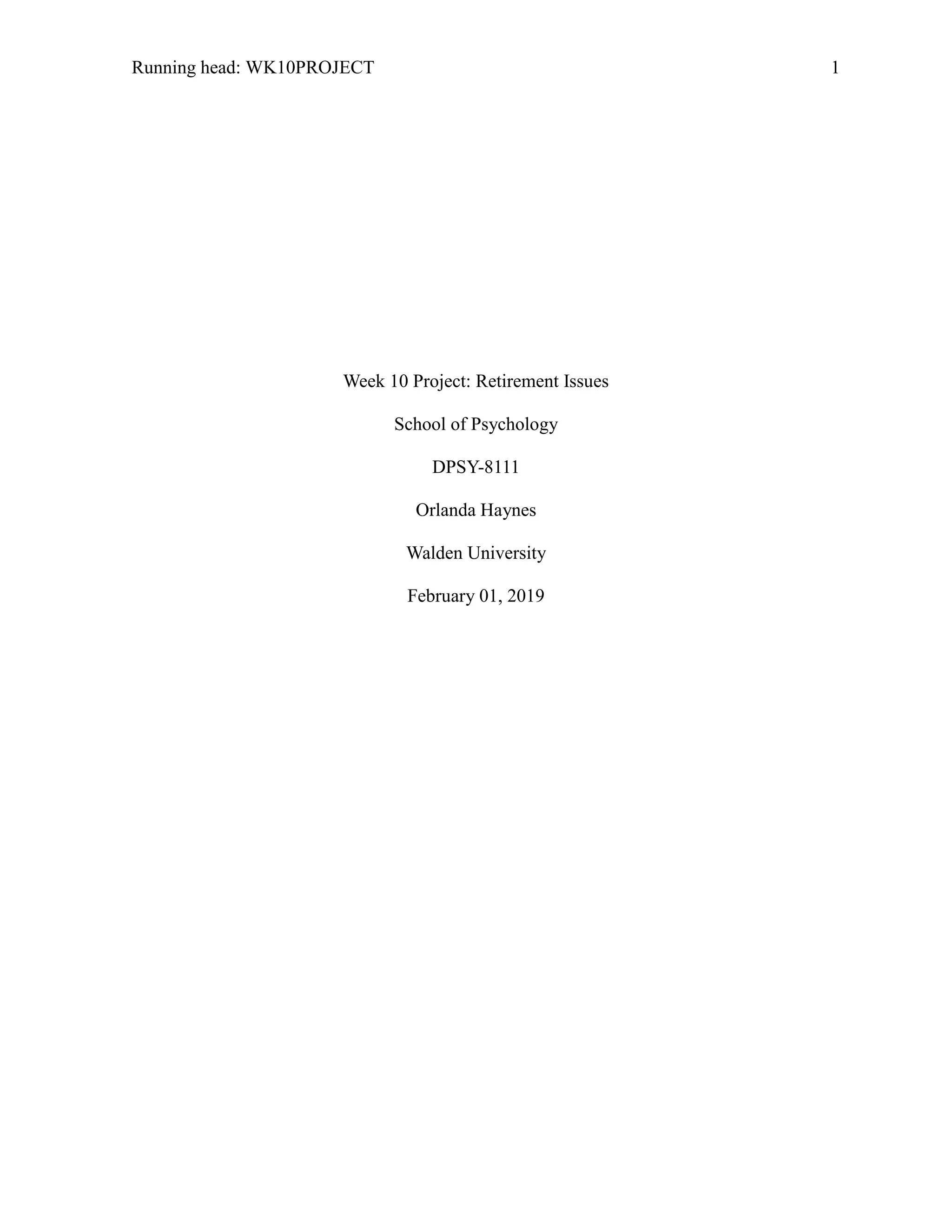The document discusses the complexities of retirement, highlighting the transition from full-time employment to pension funding and its effects on human development. It reviews human development theories, particularly Erik Erikson's psychosocial development theory and Leon Festinger's cognitive dissonance theory, illustrating how seniors may face psychosocial crises like stagnation and despair during retirement. The analysis emphasizes the importance of understanding these theories to address the unique challenges and lifestyle changes encountered by retirees.








![WK10PROJECT 9
cognitive decline - a systematic review. BMC Geriatrics, 17(1), 160. https://doi-
org.ezp.waldenulibrary.org/10.1186/s12877-017-0556-7
Moser, R. H. (1997). On retirement. Annals of Internal Medicine, 127, pp. 159-161.
Retrieved from EBSCO online database, Academic Search Premier, http://search
.ebscohost.com.ezp.waldenulibrary.org/login.aspx?direct=true&db=aph&AN=97082827
96&site=ehost-live
Newman, B. M., & Newman, P. R. (2016). Theories of human development (2nd ed.). New
York, NY: Psychology Press/Taylor & Francis. [Chapter 8, “Psychosocial Theory”].
Syed, M., & McLean, K. C. (2017, April 24). Erikson’s theory of psychosocial development.
https://doi.org/10.31234/osf.io/zf35d
Van Hiel, A., Mervielde, I., & DeFruyt, F. (2006). Stagnation and generativity: Structure,
validity and differential relationship with adaptive and maladaptive personality.
Journal of Personality, 74, pp. 543–574.
Vejar, C. (2017). Effects of retirement. Salem Press Encyclopedia. Retrieved from
https://ezp.waldenulibrary.org/login?url=https://search.ebscohost.com/login.aspx?
direct=true&db=ers&AN=89185449&site=eds-live&scope=site](https://image.slidesharecdn.com/wk10projhayneso-190317213336/75/DPSY-8111-DPSY-6111-Week-10-Project-Retirement-Issues-9-2048.jpg)